Y-12 Blog
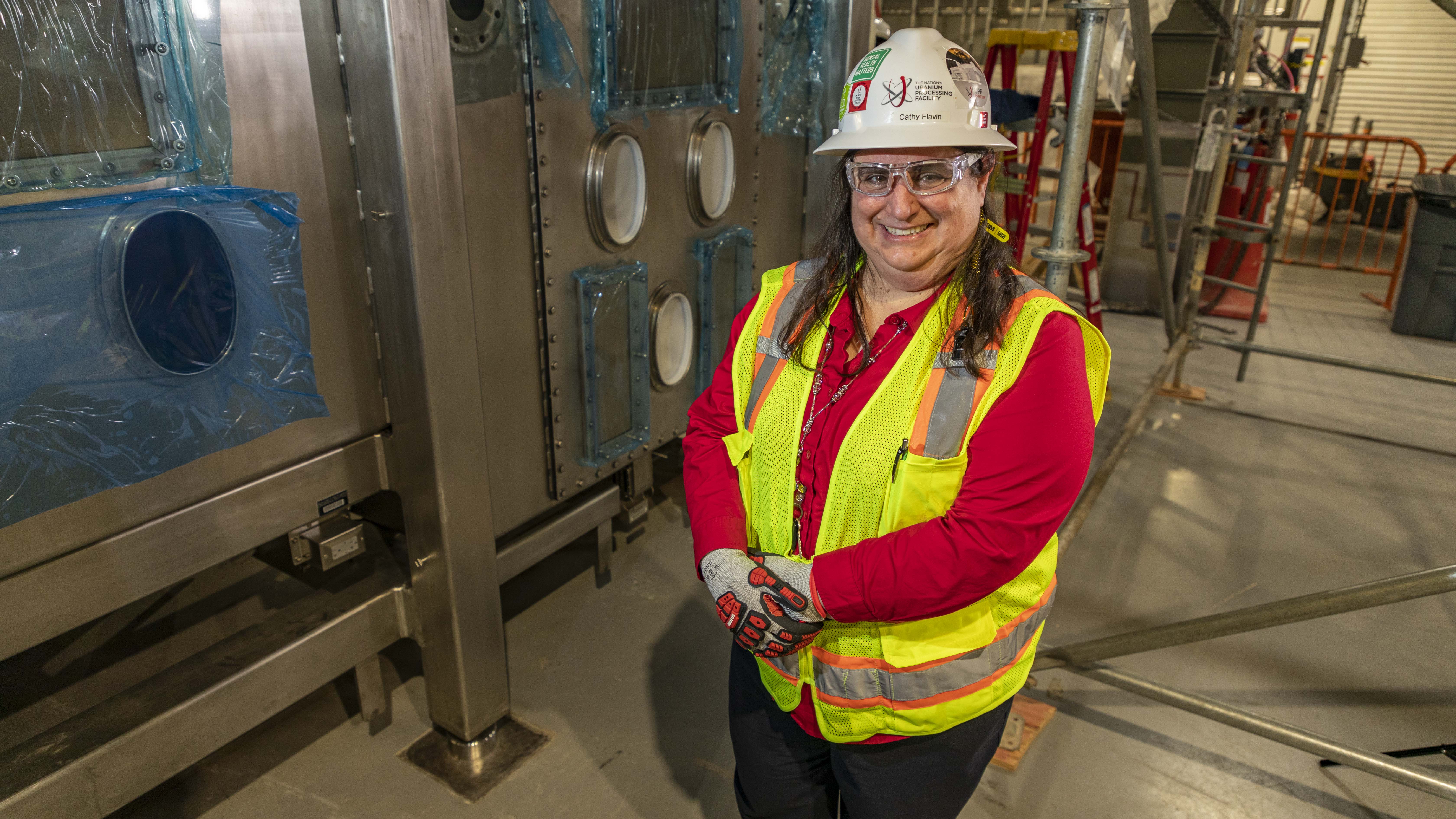
Taking a first-of-a-kind facility from design through major construction milestones is something many engineers dream of doing. For Cathy Flavin, Uranium Processing Facility (UPF) CNS deputy project director, it has been her reality. Flavin joined the project 9 years ago, working on the initial planning and design for the multi-facility concept. She had worked a year for another Bechtel project in the United Kingdom before moving to East Tennessee during the CNS contract transition when a project engineering manager was needed for UPF.
As UPF CNS deputy project director, Flavin focuses on the project’s relationships with Y-12 and NNSA, primarily the Y-12 Acquisition and Project Management Office. With each of the area project managers for the Main Process Building, Salvage and Accountability Building, and Process Support Facilities subprojects reporting to her, Flavin manages overall project performance and the escalation of issues. She provides leadership for planning and reporting, as well as guidance for implementing process improvements.
Flavin’s professional journey into engineering began at Michigan State University, when she entered as an undeclared engineering major. She knew she wanted to pursue a career in science and math, and she eventually chose electrical engineering as her focus. After graduating, her first job was working at the Savannah River Site and, from that point on, most of her career has focused on executing projects for the Department of Energy.
At UPF, many of Flavin’s colleagues endearingly refer to her as the “project historian” because of her deep understanding of the technical requirements and aspects of the site. Flavin believes her knowledge of the project and DOE processes is one of the best things she can bring to the table.
“Because I was the engineering manager during the design process, I am pretty familiar with a wide range of processes and builds happening on-site. One of the things I enjoy most about working at UPF is being able to see the renderings and designs on paper actually transformed into this history-making facility,” said Flavin. “Being a part of something like this at Y-12, whose mission is one I deeply believe in, has truly been a highlight of my career.”
What is your favorite aspect about your work environment?
Working as a team to solve problems has always been my favorite part of the job. Watching our team come together and rise to the challenge is a big motivator.
What CNS principle drives you to be successful?
All of them really speak to me daily on the project. If I had to choose, I would say setting high standards and having a questioning attitude. It’s important to challenge the status quo and make sure we do the right thing for the right reasons. Those are pillars of success that have been engrained in me throughout my career; we want to make sure we do our jobs right the first time as engineers. It doesn’t do any good if we build the building or facility but then it can’t be used by the workforce.
As an employee, what do you want to be remembered for?
I want to be remembered for being helpful and trustworthy — someone who others can depend on. On a lighter note, I want to be remembered for helping people laugh. On a project before UPF, I was told by a colleague that I could always be found on the site just by listening for my laugh. What we do is serious work, but it’s important we also look on the positive side, and humor can be the best way to maintain positive energy. It’s important to me to be a great person to work for and work with.
What work advice would you offer someone who is new to Y-12 or UPF?
Read the procedures.
Just kidding. Well, still do that. My biggest piece of advice is to find someone you look up to and ask that person to be your mentor, and when you gain experience, mentor other people.
If you could have any super power, what would it be?
Definitely teleportation, because I could pop all over the world without the headache of traveling. I would travel first to see my kids and family all over the country. A lot of people don’t know I have four kids who all have their own careers. I would probably go to Los Alamos first, and then Utah, followed by New York and Delaware.
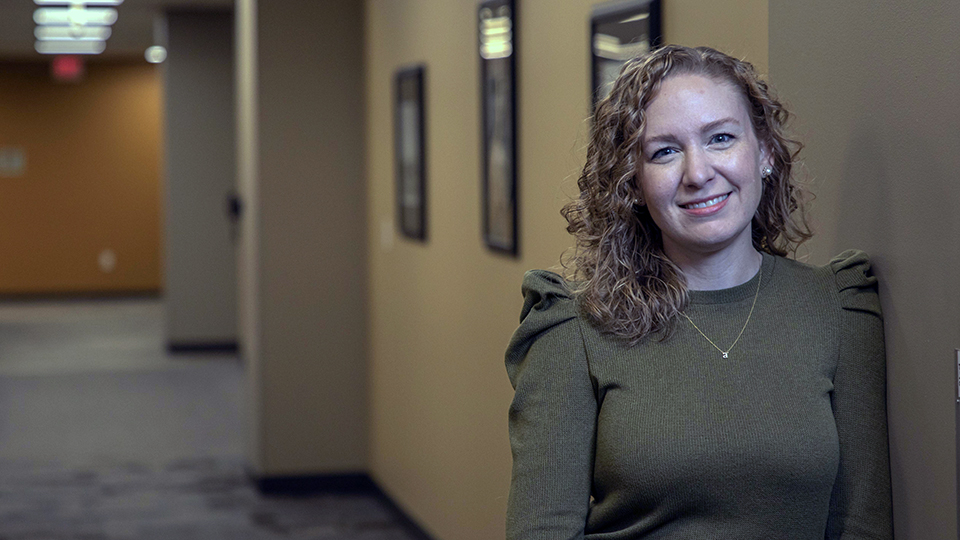
Y-12’s Alicia Swift has been named to the 2023 University of Tennessee Volunteer 40 under 40 Class.
Swift is director of Nonproliferation and Arms Control at Consolidated Nuclear Security. She joins an elite class of young professionals who have excelled since completing their degrees at UT Knoxville.
Swift received her Ph.D. in nuclear engineering from UTK in 2016.
“I am honored to have been nominated by CNS and then ultimately selected for the award,” Swift said. “I am proud to represent CNS as part of the 2023 class. I think this is indicative of the important work we all do in support of the mission and the nation.”
This latest recognition should not surprise anyone. Her relatively short career is already filled with superlatives. From 2012 to 2013, she served as a nonproliferation graduate fellow within the National Nuclear Security Administration’s Office of Global Threat Reduction.
She is past chair of the Nuclear Nonproliferation Policy Division of the American Nuclear Society and an associate editor of the Journal of Nuclear Materials Management. She currently serves on the board of directors for the American Museum of Science and Energy.
Swift, who grew up in West Palm Beach, Florida, says she owes her love of science to a high school physics teacher, Mr. Murray. Swift said he made physics extremely accessible and fun.
“He was always bringing in exciting topics for us to study, like black holes and astrophysics,” she said.
He also made the class challenging.
“Physics requires thinking outside the box and a different mindset,” Swift said. “I think I also liked the expansive nature of thinking about things in new ways. A big cause of personal growth is choosing things that are difficult and not being afraid to fail or ask for help,” she added.
“Ultimately my love of science stems from the ability to help others and society and to discover new frontiers,” Swift said.
The 2023 class was honored at a ceremony at the University of Tennessee, Knoxville, earlier this month. She was excited that her parents and sister were there to share the moment.
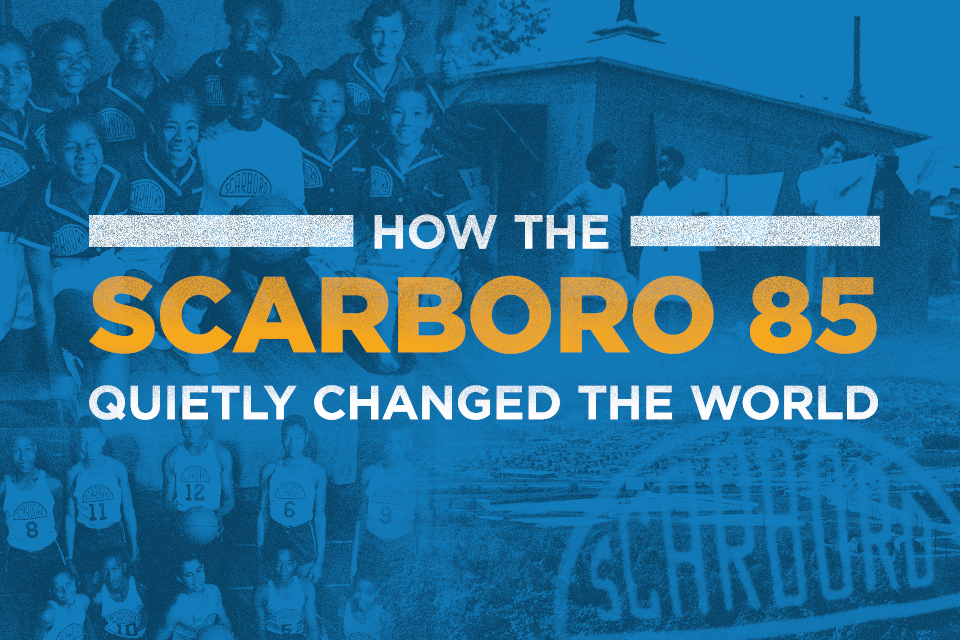
They were just children - high school and middle school students - thrust into an often painful and volatile national debate: the integration of our country’s public schools.
On September 6, 1955, only a year after the landmark United States Supreme Court decision in Brown v. Board of Education, 85 Black students from the Scarboro community walked into two then all-white schools - Oak Ridge High School and Robertsville Junior High School - and bravely broke a barrier as old as the country.
The occasion was met with some hostility, but no violence. The students will tell you they were harassed and called names, but the color barrier had been broken without major incidents. So quiet was the transition, it received little national attention. That would be reserved for later, in other parts of the South.
Many Oak Ridgers have known little about the integration efforts, but that is changing. The Black students who challenged the status quo are now known collectively as the Scarboro 85, and there are efforts underway to tell their stories to a larger audience.
“The Scarboro 85 don’t get the credit they are due,” says John Spratling, vice president of the Scarboro Community Alumni Association and a fifth-grade social studies teacher at Robertsville Middle School.
“In 1955, 85 brave, young Black students were the very first to enter all-White public schools in the Southeast,” he said.
Until recently, little has been mentioned of the events that took place in Oak Ridge in the fall of 1955. Oak Ridge’s story was overshadowed in the coming years by violent confrontations, political power plays, or even bombings in other communities, where change drew headlines.
Spratling points out that the Scarboro 85 integrated the Oak Ridge School system 5 years before 6-year-old Ruby Bridges became the lone Black student to integrate William Frantz Elementary School in New Orleans. Oak Ridge’s integration happened 2 years before the Little Rock 9 were initially turned away from an all-white school by national guardsmen and faced a cursing, hate-filled mob. Oak Ridge’s desegregation even came a year before 12 students faced anger and threats of violence while entering a previously all-white school in nearby Clinton, where a firebombing took place two years later.
Spratling also says the pioneering Oak Ridge effort happened months before Ms. Rosa Parks and Dr. Martin Luther King, Jr. rose to national prominence in the Montgomery bus boycott.
“Yet with all these major civil rights milestones, nowhere is the Scarboro 85 mentioned. This cannot be. They must get their rightful place in civil rights history,” Spratling said.
Spratling and others in Scarboro, a historically Black community in Oak Ridge, are making their voices heard over what they feel is an injustice not only to the Scarboro 85 but also to civil rights history. Spratling believes those Black students were “true American heroes” and he is determined to get their story out.
Spratling is a member of a group of Oak Ridgers who have begun raising funds for a permanent monument tol honor the Scarboro 85 in Bissell Park. It is a major effort, but if successful will provide a permanent record of the accomplishments of a group of young Black children who, in Spratling’s view, changed the world.
“Because of them, I am who I am. Without their sacrifices, I would not be where I am today,” he says.
A fundraising luncheon will be held on February 23 at the Doubletree Hotel in Oak Ridge, with civil rights leader Reverend Dr. Harold Middlebrook speaking. Consolidated Nuclear Security has supported many Scarboro events over the years and is proud to participate as a sponsor of this important event.
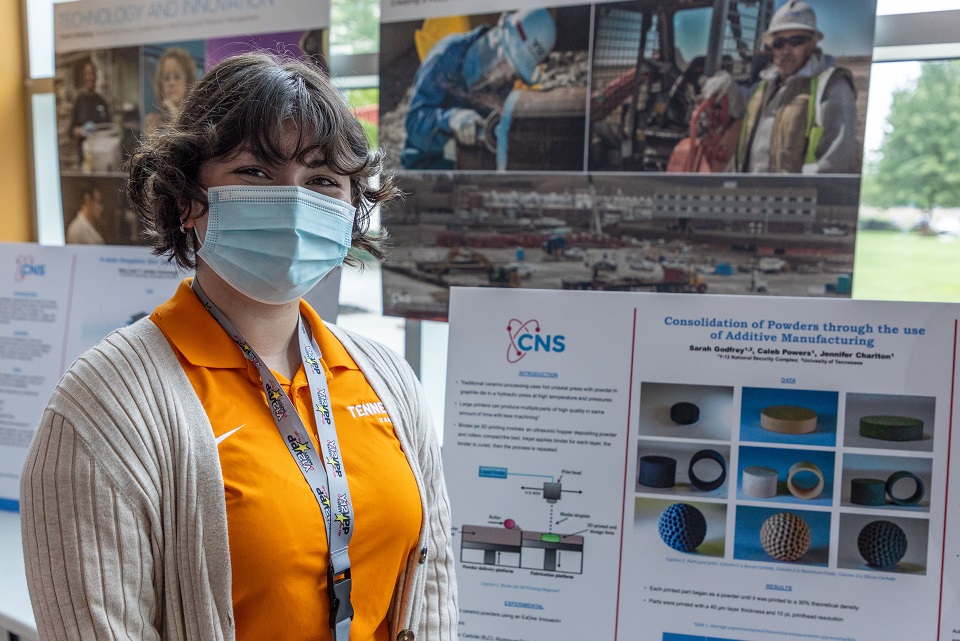
Five years after visiting Y-12 for Introduce a Girl to Engineering Day, University of Tennessee student Sarah Godfrey presented her project “Consolidation of Powders Through the Use of Additive Manufacturing” during the 2022 Intern Expo.
Y-12’s educational outreach efforts are focused on making students aware of possible careers, particularly in science, technology, engineering, and mathematics (STEM). This February, Y-12 will host the tenth year of Introduce a Girl to Engineering (IGTE).
Ideally, some of those girls attending IGTE will eventually seek employment at Y-12. That ideal became reality with Sarah Godfrey, who completed an internship during 2022 at Y-12 in the Development organization. This current senior in materials science at the University of Tennessee Knoxville credits IGTE with shaping her career path.
“I attended IGTE in February of 2017 during my sophomore year at Anderson County High School. I was so excited to see the booths of so many organizations promoting women in STEM,” said Godfrey.
Recalling her sophomore year, Godfrey said, “I had some decisions to make that would ultimately impact what I did after graduation.” With no other classmates considering engineering, she said, “It didn’t feel like a career in engineering was in reach until I attended that event.”
Initially, Godfrey considered chemical engineering because she loved chemistry. However, she was exposed to materials science while attending the Governor’s School in 2019, and her academic career was set.
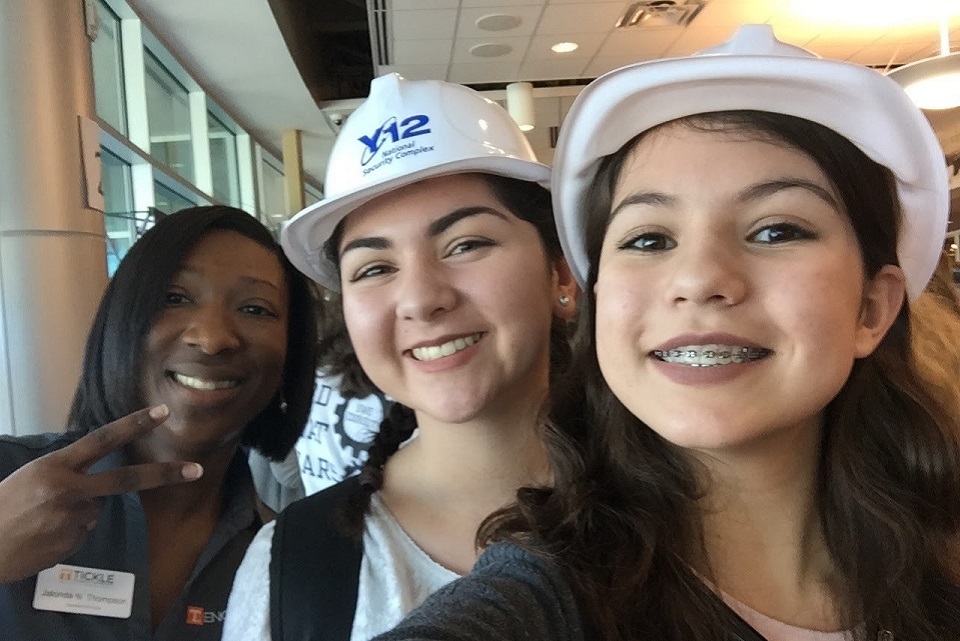
From left, Jalonda Thompson, University of Tennessee Tickle College of Engineering, with Sarah and Karah Godfrey at Introduce a Girl to Engineering in 2017. Y-12 National Security Complex hosts the annual event with the goal of introducing more young women to careers in science, technology, engineering, and mathematics.
From the classroom to research and development
Godfrey admitted that she had never really known what went on at Y-12, and she was impressed with the levels of collaboration and innovation in Development. “Even as an intern, my ideas and hypotheses were taken seriously,” Godfrey said. She explained that someone was always available to teach and train her.
Noting that most any STEM major can learn new skills to work on any project, Godfrey said, “I found this knowledge compelling. At Y-12, there is always room to learn new things.”
What’s next?
While Godfrey finishes her senior year at UTK, she is also starting coursework for her master’s degree in material science and engineering. She plans to graduate in the spring of 2024 and is open to employment with Y-12 or a similar industry.
Godfrey hopes to continue studying additive manufacturing. “The expansion of additive manufacturing to include metals, ceramics, polymers, and composites creates many opportunities to continue research for other applications,” she said.
For other young women who want to follow in her footsteps, Godfrey has advice. “Although it may seem daunting, there are other women who are doing it,” she said. “There will always be a community to support you. You should do it!”

A poster produced in the 1990s paid tribute to the Seawolf submarine.
The removal of a big machine at Y-12’s Alpha-1 facility is a big deal.
A large mill used to produce the first propulsor for the legendary Seawolf submarine has been dismantled. It took three years for Y-12 to build the propulsor, but only a few months to take down the machine used for the project.
In 1989, the U.S. Navy launched a plan to build the propulsor for the then new Seawolf. The propulsor is the device used to propel a marine vessel, which includes the propellers, water jets, and other components. The part was needed to make the fast sub quieter. For decades, attack submarines had reputations for being either fast or quiet, but never both. Fast subs could be heard by adversaries who were considerable distances away. The Seawolf task needed specific expertise and scheduling requirements, as well as advanced materials and technologies.
Making connections
“Through a connection at ORNL (Oak Ridge National Laboratory), the Navy found out about us,” said Y-12 Uranium Transformation Director John Gertsen, who was part of the propulsor team. “The Navy had to find the right kind of shop for extensive and complex machining and fabrication. ORNL said, ‘We can introduce you to Y-12.’”
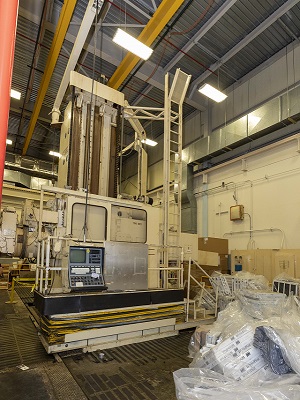
This five-axis mill has been dismantled at Alpha-1. The machine was instrumental in the production of a propulsor for the first Seawolf submarine.
The Navy explored other possible contractors, but “they knew we were capable of doing it,” Gertsen said. “Other vendors couldn’t do it, wouldn’t do it, or they wanted the Navy to build a new factory for it. The Navy came back to us.” Y-12 began work on the propulsor in 1990.
Although Y-12 had most of the equipment to build the part, the plant still needed additional machinery. This included a special five-axis, computer-controlled milling machine and a lathe. The milling machine was used to create complex shapes for the propulsor, while the lathe fashioned rings for the propulsor.
“We were given DX (a rating assigned to programs of the highest national importance) priority to get the next one coming out of the factory,” Gertsen recalled. “They told the other customer, ‘Yours is going to be late.’”
Big dismantlement with a small crew
Now, a few decades later, the mill was the focus of the recent dismantlement.
“It is a fairly small, eight-person crew that has been working on it,” said Ross Sampson, production support manager at Alpha-1, which was command central for the Seawolf propulsor project. “I’ve been involved in some other dismantlements, but nothing of this capacity.” The $2.3 million endeavor began in early September 2022.
“Despite the size of the machine, we were able to efficiently remove it,” Sampson said. “We had a high-capacity overhead crane and an experienced demolition crew. We were very strategic about how we dismantled this machine, in order to do it safely.”
The milling machine occupied a 5,000 square foot space.
“That is really just a drop in the bucket in terms of space,” Sampson said. “Alpha-1 as a whole is 278,000 square feet. But that is very valuable space.” The mill’s former space has been spoken for and will hold equipment used for special processes.
Massive equipment
The impressive 26-foot vertical turning machine was brought in as the centerpiece of the Alpha-1W wing, which was specifically added for the propulsor project. The lathe was bought used and shipped on a barge from Chattanooga.
“We needed this lathe,” Gertsen said. “It had to be big enough to do the machining on a 20-foot diameter part.” The massive lathe remains.
At one time, an area was dedicated to a large coordinate measuring machine, also purchased for the Seawolf project.
“That was a probe instead of a cutting tool,” Gertsen explained. “You probed the part to measure the surface and specific shapes. Certain shapes were important when it came to noise generation.” Sampson said that machine was removed from Alpha-1 a decade or so ago.
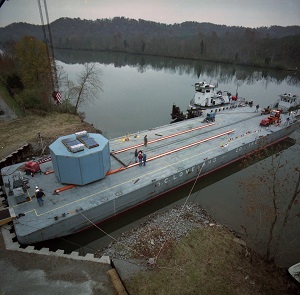
The propulsor was delivered in three subassemblies to submarine-maker General Dynamics in Connecticut, two via waterway. One of the pieces shown here is being loaded onto a barge in 1993..
In 1993, Y-12 completed the propulsor on schedule and within budget. It was divided into three subassemblies and delivered to General Dynamics in Connecticut, which built the Seawolf submarine. One part went by road in an oversize truck, and the other two made the trip via barge, starting from Oak Ridge and using the Tennessee River system. The Seawolf sub was commissioned in 1997.
Y-12 also did the model work and manufacturing design for the test propulsor for the Navy’s Virginia class submarine, made the third subassembly for the second Seawolf class submarine, crafted spare parts for the propulsors, and then transferred the process to a Navy shipyard.
Good for Y-12, the country
Although some of the machines used to help make Seawolf a stealthy vessel are no longer part of Alpha-1, the memories of that time will always ring loud for Gertsen.
“It was kind of like ‘The Hunt for Red October,’ except in that case it was the Soviets coming out with the quiet submarine,” he said. “The project gave us a real sense of accomplishment. People were proud to work on it. It showed us we can do things that are good for us [Y-12] and good for the country.”
